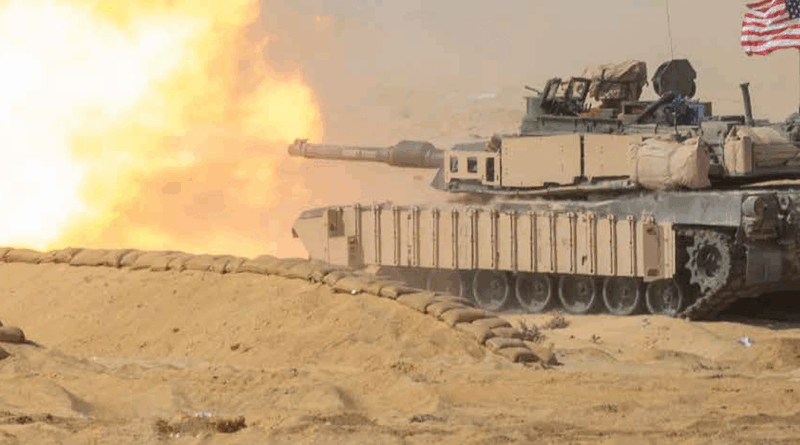Engineering Rugged Non-Volatile Memory Express (NVMe) Drive Packs to Enhance Combat Readiness
By Alan High and Joshua Eckley
Designing storage solutions for defense applications is a constant balancing act between performance, durability, and operational constraints. As military missions increasingly rely on advanced sensors, onboard analytics, and AI-driven applications, the demand for high-speed, ruggedized storage continues to escalate. Crystal Group has decades of experience addressing this challenge with rugged removable drive pack technology. These legacy rugged drive pack solutions have been tailored for Non-Volatile Memory Express (NVMe) drives, which boosts performance while meeting stringent security and reliability requirements.
The Core Challenge: Size, Weight, and Power
Size, weight, and power (SWaP) constraints are the most pressing challenge when designing a rugged drive pack. Military customers want small, lightweight systems that don’t generate excess heat. SWaP constraints are particularly significant in airborne applications, where weight restrictions are severe and excess heat can compromise avionics performance. Drive packs must deliver massive storage capacity and blazing-fast throughput in a compact, manageable form factor — without overwhelming power budgets or cooling systems.
The adoption of NVMe technology is transforming drive pack design. It’s primarily a speed game. Compared with legacy Serial Advanced Technology Attachment (SATA) or Small Computer System Interface (SCSI) drives, NVMe delivers dramatically higher bandwidth thanks to its use of the Peripheral Component Interconnect Express (PCIe) bus.
SATA maxes out at around six gigabits per second (Gbps), and SCSI is even slower. SAS offered up to 24 Gbps, but it’s not widely used anymore. NVMe, on the other hand, scales with PCIe. Since PCIe doubles every few years, available storage bandwidth doubles too. This is keeping pace with computing and sensor technologies.
That scalability makes NVMe indispensable for modern military systems, where data collection rates from advanced sensors may overwhelm legacy interfaces. From full-motion video to AI-driven edge analytics, storage must keep up to avoid bottlenecking the mission.

NVMe technology provides enhanced data storage in a small package that customers demand. Using SATA drives would require a larger footprint.
However, performance comes at a cost. The faster the performance, the more heat it generates. Unlike earlier storage media that typically consumed just 3 to 5 watts, NVMe drives can draw 15 to 25 watts each. This dramatically increases thermal load and the need for cooling.
Cooling: From Data Center Comfort to Harsh Battlefield Environments
Data center drives are designed to operate in stable, climate-controlled environments. Rugged drive packs, however, must maintain performance in desert heat, arctic cold, and everything in between. Essentially, COTS NVMe drives designed for 30°C (86°F) data centers are being adapted for extreme environments where temperatures can far exceed the thermal limits of these drives.
To assure performance in a wide temperature range in field environments, Crystal Group uses a range of different form factors and cooling methods. These may include:
- Passive Conduction cooling via heat sinks and cold plates.
- Forced-air cooling with optimized airflow across the chassis.
- Liquid cooling for the most demanding environments.
The cooling solution is always tailored to customer requirements. If a platform already has liquid cooling available, the design will be adjusted to integrate with liquid cooling, the preferred cooling solution for maximized performance. If liquid cooling is not available, the design is optimized for air or Conduction.
Regardless of cooling method, placement is a key consideration. This can include making the drive pack the first component in the cooling loop or positioning it at the chassis front, where it gets the most superb airflow. In the most thermally challenging environments, simulation and testing are critical. Crystal Group will model thermal performance in advance and then validate in the lab with real-world drives to ensure drive temperatures remain within spec.

Hot-Swappable Drive Packs: Enabling Fast Turnaround
One of the defining features of modern military drive packs is hot-swap ability. This is the ability to remove and replace drives quickly without powering down the system.
This capability is particularly valuable for aircraft. After a mission, crews can pull out a full drive pack containing sensitive or mission-critical data, insert a fresh pack, and relaunch the aircraft with minimal downtime. Ground vehicles benefit too, though their downtime requirements are often less stringent.
Historically, rugged drive pack designs made swapping cumbersome. Earlier drive sled designs made replacement labor-intensive, often requiring multiple thumb screws per drive. Modern designs streamline this process, reducing the requirement to just one or two fasteners per drive pack—or, in the case of Crystal Group’s 2×2 Quad Pack, a single lever mechanism. This reduction in fasteners decreases service time, minimizes hardware wear, and improves overall maintainability in the field. Fastener reduction cuts removal time dramatically and enhances ease of use.
The mounting design may also improve thermal performance. Instead of cooling individual drives, engineers can cool the entire pack at once.
Reliability and Ruggedization
Frequent swapping introduces another challenge: connector wear. To address this, Crystal Group uses high-reliability connectors rated for thousands of insertion cycles, combined with mechanical guide features that ensure precise alignment. Guides take the stress off the connector itself. Every time the pack is inserted, the guides ensure it lines up properly, so the connector doesn’t incur excessive wear.
Beyond connectors, ruggedization covers a broad spectrum:
- Shock and vibration resistance for ground vehicles and aircraft.
- Ingress protection against dust and moisture.
- Conformal coatings to guard against humidity and environmental contaminants.
At Crystal Group, the level of ruggedization is tailored to match customer requirements. Fully sealed, IP67 waterproof, liquid-cooled packs can be made immersion-ready, while air-cooled models rely on conformal coatings and dust mitigation.
Security and Encryption
For guaranteed performance, physical ruggedization is only half the equation. In defense environments, protecting classified data is paramount. Most military customers require drives that meet FIPS 140-3 encryption standards. These self-encrypting drives (SEDs) can form the foundation of a Commercial Solutions for Classified (CSfC) architecture, where multiple layers of encryption protect data-at-rest.
Security measures extend beyond encryption and include:
- Physical security: Removing drive packs post-mission for secure storage.
- Mechanical tamper resistance: Tamper-proof hardware prevents unauthorized disassembly.
- Layered encryption: Combining SEDs with additional software encryption ensures only authorized users have access to sensitive information.
This layered approach allows military operators to both physically and digitally safeguard data under a wide range of operational conditions.
Standardization Versus Customization
Although drive packs share a common internal architecture by utilizing COTS drives, their external design is highly specific to customers. However, the exterior, including connectors, form factor, and cooling interface, is tailored to the platform. One customer might need a sealed, liquid-cooled design; another might prioritize air-cooled efficiency in a smaller footprint.
Drive pack design must maintain interoperability where possible while delivering application-specific ruggedization.
Looking Ahead: Rising Power, Rising Heat
The most significant trend shaping the future of drive packs is the continued increase in power consumption. Legacy drives, on average, pulled around 3-5 watts. NVMe drives are pulling 15-25 watts each. Cooling NVMe drives is a design priority from the start.
Speed and capacity gains are essential for today’s missions, but they come with real thermal challenges. These can be solved with enhanced cooling, but it’s something that must be engineered into every solution. Rugged drive packs are precision-engineered systems balancing SWaP constraints, thermal management, ruggedization, and security.
By adapting COTS NVMe technology for the battlefield, engineers must overcome challenges of heat and operational integration. The payoff is mission-critical high-speed data storage that enables real-time analytics, rapid mission turnaround, and confidence in the field.
As data volumes continue to grow and missions become increasingly sensor- and AI-driven, rugged drive packs will remain at the core of military computing architectures.
Alan High is a senior systems architect, and Joshua Eckley is a senior mechanical engineer at Crystal Group.
Supporting Image Captions
Drive Packs Photo Caption: Designed for mission-critical environments, NVMe drive packs simplify operations by consolidating storage and enabling rapid data transfer.
Engineering Photo Caption: Teamwork in action: Engineers combine expertise to design and deliver rugged, reliable systems.
Collaboration Photo Caption: Close collaboration with end users helps Crystal Group tailor rugged solutions that meet real-world mission demands.

